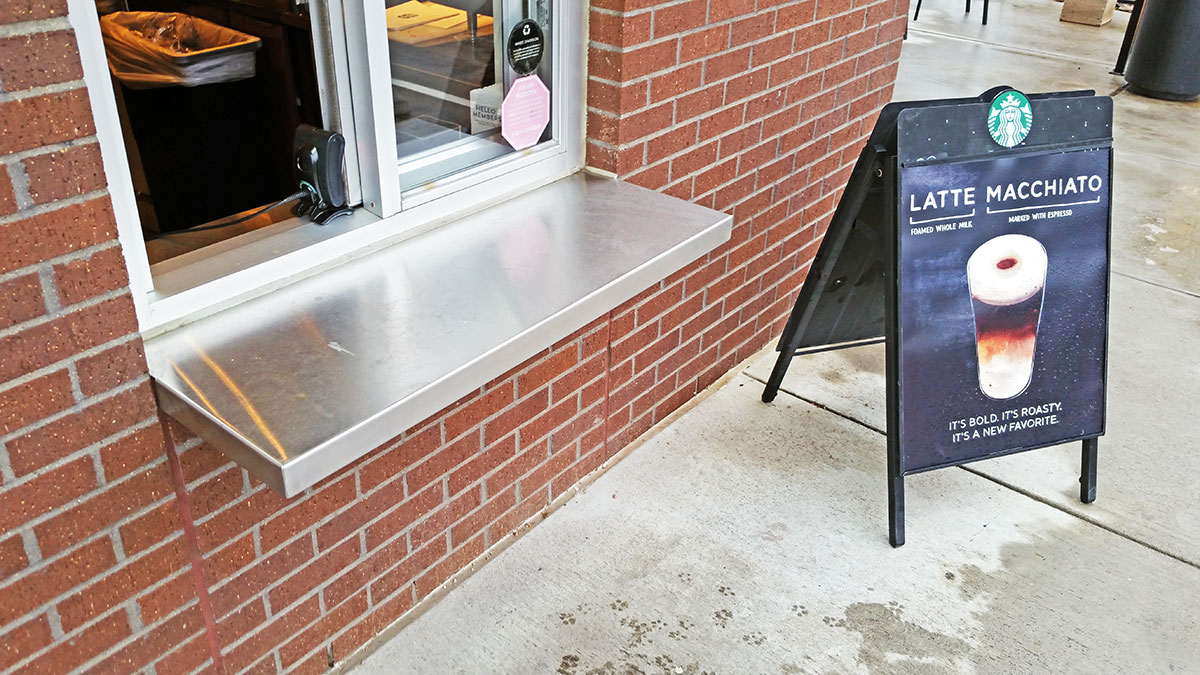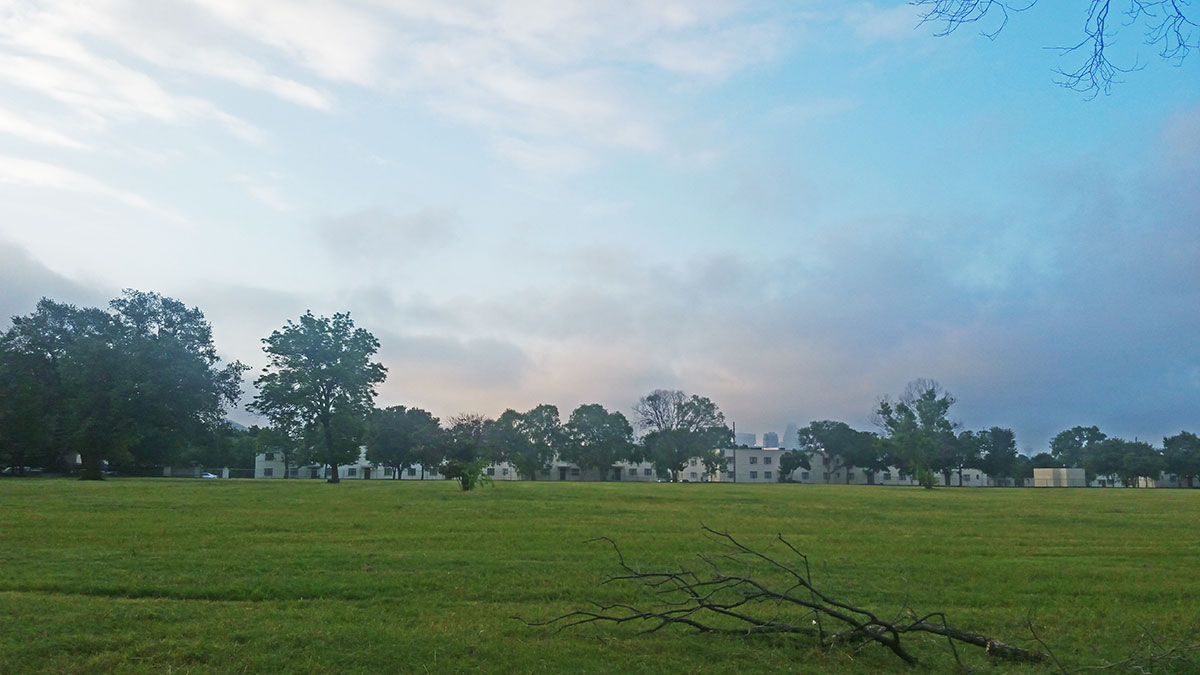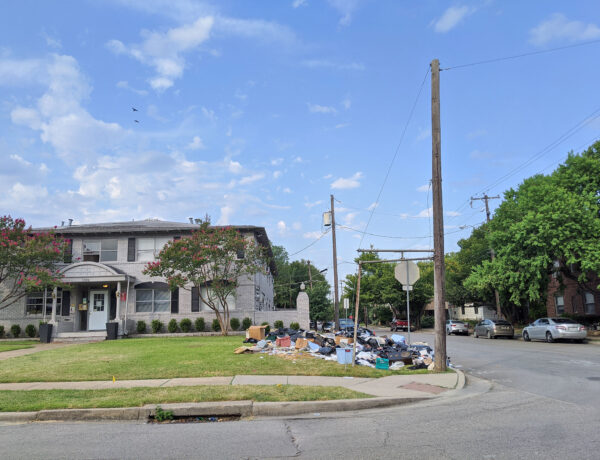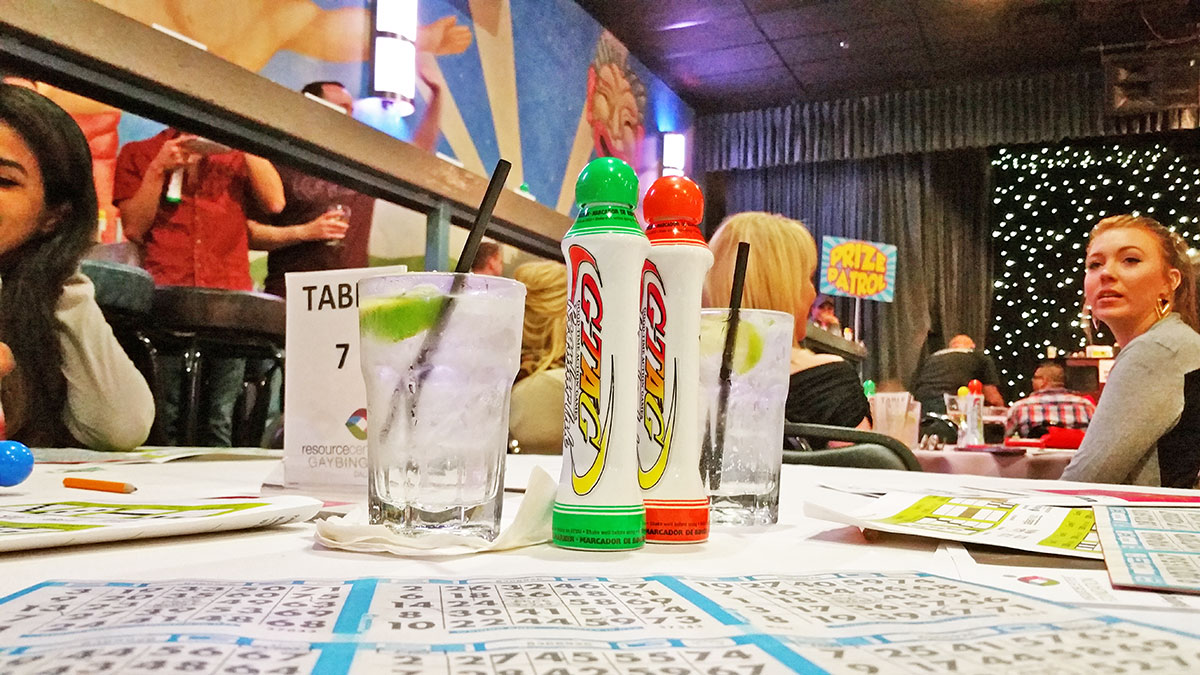Some mornings I venture to a Starbucks on the outskirts of Oak Lawn near the Medical District.
This is a unique Starbucks because you can’t go inside – it only has a walkup window and an extremely busy drive-thru.

The walkup Starbucks at the edge of Oak Lawn.

Ingrid the Labradoodle at the walkup Starbucks. She’s being patient.
My regular barista says that the walkup Starbucks has a reputation for making terrible drinks. I thought this was unnecessary shade until the walkup Starbucks botched my usual order of coffee with cream.
I go to the walkup Starbucks pretty infrequently, because there always seems to be a line of pissed off people waiting for drink redos. When I do feel like torturing myself going, I usually pass a massive, fenced-off field that covers 2 city blocks.

The bars outside of the former Cedar Springs Place projects.
The field is bordered by public housing and condos.
This huge blank space in the middle of the city is very strange. The field is not a park, and it is too well-maintained to be a vacant lot – the grass never grows too long, and a guy rides around in a golf cart to pick up trash every morning.
I finally got around to Googling the mystery field.
It turns out that the field used to be a crime-ridden public housing development called “Cedar Springs Place” which was torn down around 2011 for redevelopment. The redevelopment never happened because condo-owners fought the Dallas Housing Authority’s plans to create a denser public apartment complex.
Everything was supposedly resolved around 2014, but construction on the new Cedar Springs Place still hasn’t started. So for now, there is just a massive piece of land that is blocked off from any human use.

The open field at the former site of Cedar Springs Place, Oak Lawn.
The fight over Cedar Springs Place challenged my assumptions about gentrification.
I always assumed that gentrification pushed out existing residents and businesses through buy-outs and increased rent prices. However, for the residents of Cedar Springs Place, their exit from the neighborhood was more of an eviction.
The original Cedar Springs Place was built in 1937, which means that it predated the hostile condo owners (by far.) And yet, the new condo owners were able to block the city’s redevelopment plans because of concerns regarding property values, noise, and crime.

The downtown Dallas skyline behind the former site of the Cedar Springs Place housing project.
This fight reminds me of a similar situation on the other side of Oak Lawn in what we call the “Ratchet Triangle” – a collection of three gay bars on Avondale Avenue.
In addition to the three existing bars (Pegasus, Zippers, and BJ’s) there was once a fourth bar called Bill’s Hideaway.
The Dallas Voice describes the venue as a small piano bar tucked in the shadow of new townhomes. Bill’s Hideaway closed due to financial reasons, and the new townhome residents were able to block the Hershner family’s plan to reopen the venue a few years later.
The comments on both the Bill’s Hideaway and Cedar Springs Place stories are fascinating. One guy wrote, “If you don’t want to live next to a bar, then don’t move in next to a bar.” That seems logical, but that is not how Dallas operates.
In both cases, people bought property next to undesirable neighbors (a bar and the projects) and then were able to successfully evict the unwanted neighbors once redevelopment plans were proposed.
It seems like the zoning courts in Dallas are very focused on the current state of a neighborhood, which will always disfavor a redeveloping property seeking a permit. Right now, this rule favors gentrifers. I wonder if it will someday be used to kick out a corporate tenant, like an underperforming Starbucks with a long drive-thru line.





No Comments